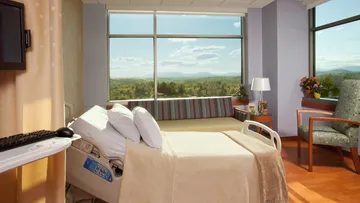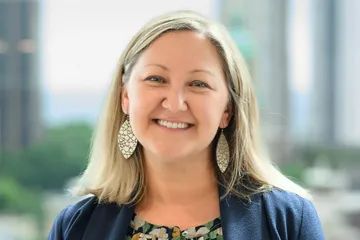We have found that patient satisfaction, safety, clinical effectiveness, and the relationship between the caregiver team and patient all influence the patient experience. How do you think Patient Experience can influence any Clinical Outcomes?
The most important thing from our standpoint is a theory called Jobs to be done. We use this Jobs to be done theory to explain the causality of a purchase decision. We define a purchase by anytime anybody uses anything to solve any problem for themselves. The framework looks at this: “I have a set of needs and I am looking for tools to help me solve a given problem in real time. I am going to look for tools in my surroundings to solve that problem. There are constraints on me: reasons that I will use one tool or another, reasons that I will not do anything, or reasons that I will end up doing something. The Jobs to be done framework helps us understand that causality more effectively.”
Here's an example: we just did a research study on retail health. We sit people down for an hour and a half interview and re-create a documentary of their experience. At the end of this process and the ensuing analysis, we generate a timeline of causal events that led them to seek retail- healthcare (to get up and say I’m sick and I am going to go get help — what really led them to do that.) Secondly, we look at the competition horizontally; to hire something or find a new tool, you must fire or get rid of an old tool.
So, in my case, I maybe had a flu, I was drinking tea (I called my Mom for herbal remedy tips) and two days later it didn’t work. So, I finally give up and think I need antibiotics and somebody tells me “you look miserable, you need help” and I say fine and I go to the retail clinic, I get an antibiotic. So, there’s a sequence of events that led me to do what I did, and it turns out that it’s often very different than what you would expect.
A surprisingly substantial number of people who we interviewed, their Job to be done for going to the retail clinic was to have an excuse so they didn’t have to fulfill their day to day obligations because they were tired. So, they WERE sick, they kept working, and the retail clinic really was an excuse for them to get out of that. So, if you understand the causality behind that, it has all sorts of implications behind the way you market your product, the way you design your business model, what kind of service offerings you give, etc.
When you say patient experience, I think it is extremely relevant to this conversation of “What is the patient really trying to accomplish?” And to optimize their experience in the moment, you really must understand the trajectory that they are headed on, the kind of progress that they want to make, and the situational constraints around that.
You’re also talking a lot about the admission process. How individuals seek treatment from a healthcare provider. Did you come across anything in your work about how they leave a provider? The end of the continuum of care?
Once somebody makes the decision to go to the emergency room or go see their doctor, they are now enrolled in the system and they DO make purchasing or hiring decisions in that circumstance but from our research we learned that they feel helpless and they’re outsourcing their decision-making responsibility to somebody else.
It turned out that a lot of the people who visited a retail clinic were doing it because they had a horrific experience in the past with the emergency room or some other healthcare provider that they felt like made them wait for an extremely long time. They felt trapped – like they couldn’t get out of the hospital if they decided they wanted to leave that there was no way they were going to get out. They knew it was good for them, but they still didn’t want to be there during that experience.
For these patients, going to the hospital was a last case resort. They didn’t want to go until they knew for sure that they were dying. For good and bad, people have a tough time gauging if they do need to go to the hospital or not. People keep themselves out when they DO need to go because they would prefer not to be there.
In terms of optimizing the patient experience, what our research looked at, from the Jobs framework, was the satisfaction around these events and it was low.
Did you just talk to the patients or was any of the research talking about how families are engaged with the patient experience?
One of our hypothesizes here is often people who seek health care are not fulfilling their own Job to be done, they are fulfilling the job to be done of a family member or a loved one or somebody really close to them. They are making the decision on their behalf.
In every single interview I have done, it was a social impetus that prompted them to first acknowledge that they were sick and then secondly to drop all their plans and go to the doctor or go seek health care. It’s almost as if you need some sort of social acknowledgement to believe that you are sick. Especially in the case of parents with children, they are much more anxious about healthcare for their children than someone in their mid-twenties would be worried about themselves and their healthcare. The same is true for children of their elderly parents as well.
Where there any opportunities identified that you felt could be improved at the Minute Clinics in the Retail Environment?
A: We wrote a blog on some of our preliminary findings. The Job to be done for some of our interviewees was “help me escape/get out of my current obligations. I just want to be alone. I want to be able to just recuperate, focus internally, and when I feel ready I am going to go back out and face the day to day challenges that I have.” It turns out that they don’t want to talk to people. They don’t want to have the receptionist smile at them. That’s the worst thing because they don’t want to smile back at anybody else. Women especially don’t want to be noticed because when they are in public they would rather look their best. Because they are sick, they don’t want anyone to see them. One woman told us, “I went to the retail clinic because there was a computer there and I knew that I wouldn’t have to talk to a receptionist because if that receptionist smiled at me one more time so help me I might snap! I just knew I couldn’t handle it. I was at my emotional limit. I went to that retail clinic because I could just punch my information into a computer and not look at another human.”
They’re not trying to be comforted. They want to be alone. They want to be introspective.
Did the subject of design ever surface in your work?
We were very focused on the customer experience side so design didn’t come up, but design is naturally implicated in all of this. It means that when you’re designing a service experience, that unless you understand the differentiated Jobs to be done of the people you’re trying to help, that some people are going to be trying to accomplish one thing, with a set of constraints, and some people are going to be trying to accomplish a different thing. Unless you find a way to optimize around those, you are going to have a challenging time delivering on everybody’s needs.
So, when do you envision that your research will be finished?
It will be a continuous process. I think in the next phase we are going to look at bariatric surgery. This is going to be extremely interesting—what we want to understand is their story. We want to understand when they first realized they wanted to lose weight, when they tried a weight loss program and it didn’t work, when they tried something more extreme like Weight Watchers. Then they got to the point where they couldn’t do what they loved anymore, and all of these experiences built up to the point where they felt like they were willing to go under the knife and get surgery. And they think about themselves in a new way—they think I’m going to be a new person. We want to study this experience and we think this will start some unveiling of the Jobs to be done around chronic disease and when people finally seek help for a chronic problem that has followed them for a long time.
We are working with the Rewired group in Detroit. They pioneered this research and they’ve done a phenomenal job in a lot of sectors, mostly in consumer product design but it’s applied in a lot of areas. So, we’re working with them to push some of these ideas out about jobs to be done.
It speaks volumes about prevention and strategies that can enable patients to make better choices from a wellness perspective. So how do you change the dynamic in thinking about preventative care?
Yes! The thing with prevention is you find very few people who would not ideally like to do what they want to do. The problem is they haven’t found anything that helps them do their Job to be done in that instance. And in other cases, there are people who don’t really care about being healthy and then they have a close family member who has a heart attack.
There’s a trigger.
There MUST be a trigger. Part of our theory is that you can create Jobs to be done. You can create experiences for people such that they realize that there is something that they need to do, a type of progress that they want to make. What the Rewired group says is, “In general, we do a fantastic job of designing products that in theory, people should want, and that have a lot of pull to them, but we do a really bad job of lowering people’s anxieties around whether it will work or not. We also do a really bad job of countering people’s habits or their comfortableness in the present.”
So, when you’re designing a product, it’s not just about building something new, it’s about convincing or selling the customer on the fact that moving to the new solution is a lower risk for them to. Because anything new is scary and anything new is uncertain. The old is comfortable and it might be a poor solution, but it’s a known thing. The future is the thing that’s unknown. So, if you can find a way to lower those anxieties, this is where you drive the clear majority of your improvement in sales or in engagement, which is huge for preventative care because people in general have had an experience where they know that there is a job that they should do better, but they haven’t been able to overcome those internal anxieties.
That is interesting because that is one thing we found in our research – that it’s not necessarily about creating all these complex things but bringing familiar items from their everyday life to the experience. So how do you personalize with some favorite items to make the comfort level more pleasant for them, so they are not necessarily scared of taking that risk or being in that scarier place to get treatment.
That’s exactly right. Lower the anxiety. That works within the context of what they are trying to accomplish, when people understand the type of progress they’re trying to make, and you can lower their anxieties around making the type of progress that they want to make.



